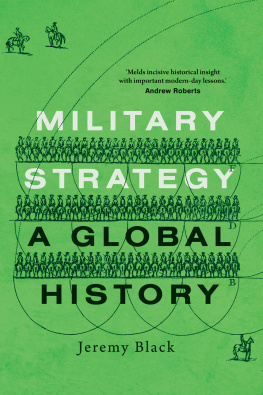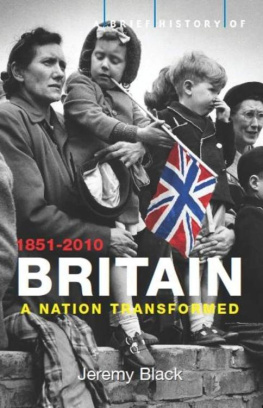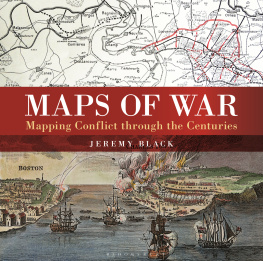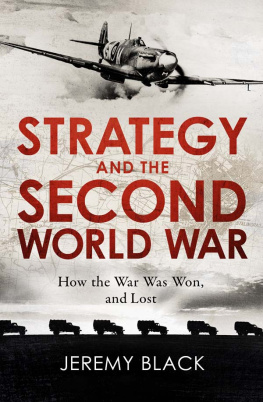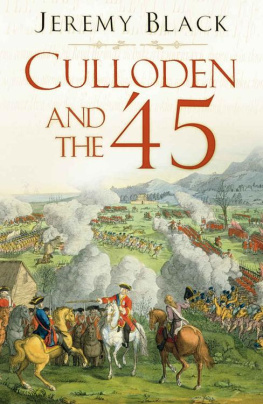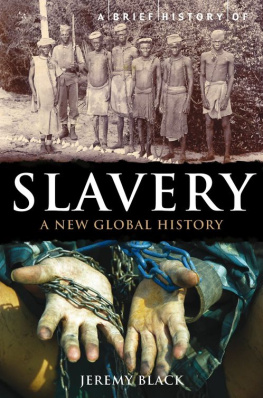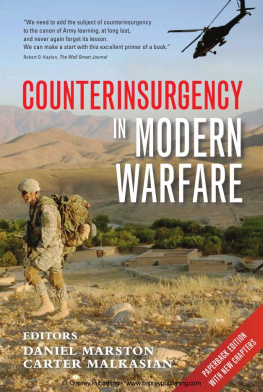Abbreviations
BL | London, British Library, Department of Manuscripts |
| CAB | Cabinet Office papers |
| COIN | Counterinsurgency |
| FO | Foreign Office papers |
| JMH | Journal of Military History |
| NA | Kew, London, British National Archives |
| RUSI | Royal United Services Institute Journal |
| WO | War Office papers |
About the Author
Jeremy Black graduated from Cambridge University with a Starred First and did graduate work at Oxford University before teaching at the University of Durham and then at the University of Exeter, where he is professor of history. He has held visiting chairs at the United States Military Academy at West Point, Texas Christian University, and Stillman College. Black received the Samuel Eliot Morison Prize from the Society for Military History in 2008. His recent books include Air Power: A Global History, War and Technology, Fighting for America: The Struggle for Mastery, 15191871, and Rethinking World War Two: The Conflict and Its Legacy.
Chapter One Introduction
History is the events of the past and the accounts we provide of these accounts. The latter are very much affected by current concerns, as are the questions asked. As a consequence, it is scarcely surprising that insurgencies and counterinsurgency warfare have each risen in attention over the past quarter century. In particular, the lengthy Afghanistan and Iraq commitments of the United States from 2001 and 2003, respectively, encouraged much greater interest in COIN (counterinsurgency), and this, at once, entailed interest in the present, past, and future of such conflict.1 Americas opponents could not afford anything similar to the American military and therefore had to resort to asymmetrical means. Although the historical background was sometimes flimsy, there was a welcome reexamination of past episodes, notably, at first, British methods from the late nineteenth century on and those of the United States in the Philippines from 1899 but, subsequently, extending more widely.
This interest followed and built on Rupert Smiths idea of war amongst the people, which he argued constituted a new military paradigm.2 This was an idea advanced in the 1990s that was encouraged by the experience of conflict in Somalia and, even more, Rwanda and the former Yugoslavia in the 1990s. It was also fostered by the claim that American dominance and the capabilities of modern weaponry made great-power warfare obsolescent and that the United States would therefore have to prepare for other types of warfare, notably asymmetrical conflict. The idea of a war between civilizations,3 more particularly Islam and the West, served as a bridge between the concept of asymmetrical warfare and the development of COIN as a nexus of doctrine and practice.
This thesis will be considered in chapters 1012. Here it suffices as an introduction to note that the role of conflict within states, the resistance to established authority referred to in the dictionary definition of insurgency given in the preface, has been crucial, both in terms of the histories of the latter and with reference to the history of war. However, conflict within states has been underrated on the whole in military history and indeed in most national historical narratives wherein, with the exception of Marxist and Marxist-influenced historical writing, conflict within states often has been regarded as irrelevant, even inconsequential, and certainly as contrary to themes of nation building and national integration.
This underrating is also the result of a widespread preference for considering war between states, notably after the discussion of an initial independence struggle whenever that is relevant. Indeed, such struggles are generally presented as wars between states because of the emphasis on the protonationalism or nationalism supposedly (or actually) present in the independence struggle. At the level of public culture, the unglamorous role of regular armies, which do not tend to be the underdog in insurgency struggles, also has an impact.
Linked to this process but also separate from it, conflict within states has been brought into the general narrative when it can be made readily comprehensible. In most cases, this is as part of an account of armed opposition to imperial rule. Indeed, this theme predominated in twentieth-century discussion of insurgencies. In addition, civil wars that approximated in military terms to conventional conflicts between states have attracted particular attention and have been studied in these terms rather than as the insurgencies they were. It was the rejection of established authority that was most significant. In contrast, studying these as conventional wars is the case, most obviously, with the English (164246) and American (186165) civil wars but also more generally, for example, with the Spanish Civil War (193639).
Although attracting less attention, there were early instances of a process that was very typical with successful insurgencies. For example, the Portuguese insurrection against Spain in 1640 rapidly became a conventional war between the two powers, with Spain fighting a border war rather than one within Portugal.4 Although the Dutch retained positions within Belgium, the same was true of the successful Belgian insurgency against Dutch rule in 1830. The resistance in Brazil in the 1630s50s to the Dutch occupation of the northeastern coast is an aspect of the same process, although the Brazilian forces did not make an extensive transition to new-style European infantry.5
Most insurgencies and civil wars, however, lack any easy characterization. In part, this situation captures the extent to which civil wars, insurgencies, insurrections, rebellions, revolutions, and mass opposition, while often similar, are not necessarily identical, indeed often far from it. As a different but related point, phenomena, such as geopolitics and strategy, predate descriptive words, while terms and their meanings change greatly across time and, moreover, do not adequately translate. In addition, the understanding and presentation of individual insurgencies are both contested and subject to change. As a result, it is, for example, possible to offer a localist view of conflicts that are habitually seen as nationalist. The habitual view emerges because they would in time become nationalist or because we are conditioned to view and analyze conflict with either a nationalist or a class framework.
A key element is that of goal. Clausewitz divides wars as being fought for the overthrow of the opposing regime or something less than this. Such a classification is very valuable for insurgencies and thus for counterinsurgency conflict.
Issues of definition are repeatedly significant for political as well as methodological reasons. For example, is it only outcome that earns the designation war? This is a question posed by the contrast between the American War of Independence (177583) and the unsuccessful Irish rebellion/revolution of 1798 against British rule. Similarly, there are major disagreements over whether events in India in 185759 should be referred to as a mutiny, a rebellion, or a war of independence against Britain. So also with smaller-scale instances of what has been defined as rebellion, such as the Ghost Dance campaign of 189091, in which the American government responded with overwhelming force to a messianic revival movement among the Sioux, crushing it.6
There have been attempts to classify insurgencies, for example, for Africa in the 1990s, to distinguish between liberation insurgencies, separatist insurgencies, reform insurgencies, and warlord insurgencies, as well as bandit organizations.7 This typology faces problems, not least due to omission, application, and significant overlaps, but it captures the range of insurgencies and the extent to which they have very different meanings and connotations. There are also issues of definition with related phenomena, such as warlords, brigandage, and death squads.8 Aside from questions of definition, there are others of explanation. Assessing the Roman Empire, Susan Mattern suggests: One way to view insurgency, resistance, and banditry is as attenuated areas or holes in the network of social relationships that linked the empire together and bound it to the senatorial aristocracy and to the emperor.9



